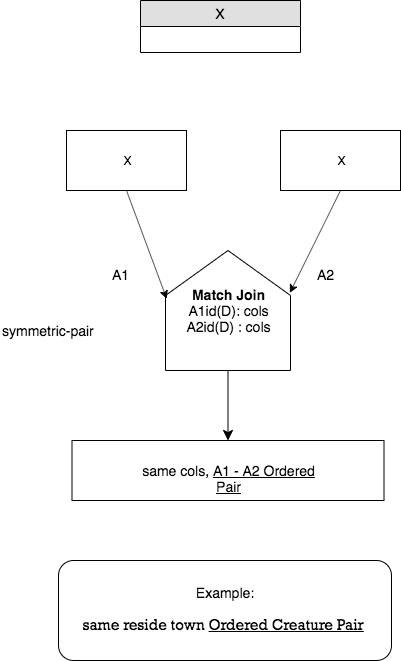13.13. Match Join Framework¶
The general framework for Match Join with two relations A and B include these primary aspects of the circumstances:
- Whether input relations are:
Different Bases
Same Base
Same Relation
- What the Symmetry of the Match Join is:
Non-Symmetric-A, when the columns being matched have a M - 1 correspondence
Symmetric-Either, when the columns being matched have a 1 - 1 correspondence
Symmetric-Pair, when the columns being matched have a M - M correspondence
What ‘works-on’ columns are being matched, in terms of A’s identifier and B’s identifier, as given in the following table:
Letter |
Short Name |
Input relation’s columns being matched |
|---|---|---|
E |
Exactly |
exactly its id (all identifying columns) |
M |
More |
more than its id (id +) |
S |
Some |
some of its id columns, but not all |
O |
Overlapping |
some of its id columns, + some non-id columns |
D |
Disjoint |
disjoint from id columns (no id columns) |
The nine total examples we presented in detail are as follows in this table:
Bases of A, B |
A data to B data through works-on cols |
Symmetry for symbol |
Input relation columns being matched |
|---|---|---|---|
Different Base, Achievement Skill |
M-1 |
Non-Symmetric-A |
Aid(D),Bid(E) |
Different Base, Achievement Skill |
M-1 |
Non-Symmetric-A |
Aid(D),Bid(M) |
Different Base, Aspiration Creature |
M-1 |
Non-Symmetric-A |
Aid(S),Bid(E) |
Different Base, Creature Skill |
M-M |
Symmetric-Pair |
Aid(D),Bid(D) |
Same Base, Aspiration Creature- Skill Pair |
1-1 |
Symmetric-Either |
Aid(M),Bid(M) |
Same Base, TeamSkill Skill |
1-1 |
Symmetric-Either |
Aid(E),Bid(E) |
Same Base, Achievement Aspiration |
1-1 |
Symmetric-Either |
Aid(E),Bid(E) |
Same Relation, Creature Creature |
M-1 |
Non-Symmetric-A |
Aid(D),Bid(E) |
Same Relation, Creature Creature |
M-M |
Symmetric-Pair |
Aid(D),Bid(D) |
The first three are the Different Base, M -1, but the works-on columns are different. The generic conceptual schema fragment and precedence charts for these 3 cases looks the same. There were 3 Same Base, 1 - 1 cases presented, two of which use the same generic form of precedence chart. Overall, there are 6 generic circumstances with precedence charts shown below, as a means to orient you to these common cases and be able to apply them to other situations.
13.13.1. M - 1 match over cols between Different Base A and B¶
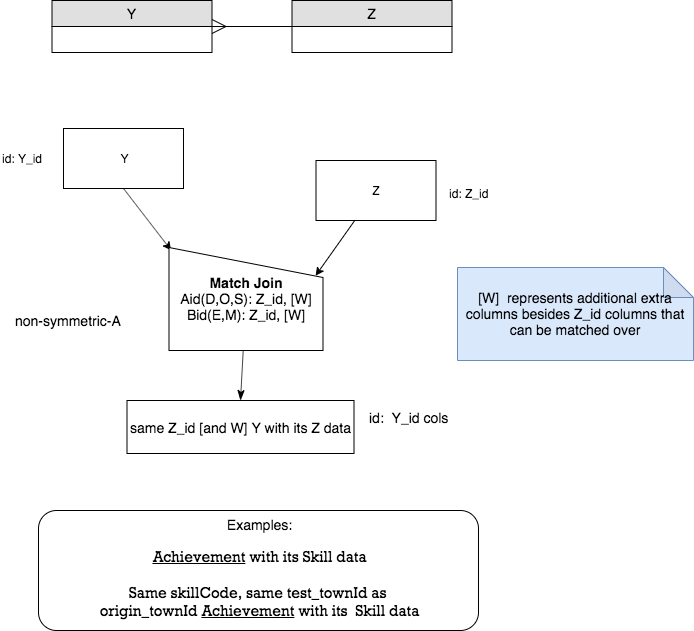
13.13.2. M - M match over cols between Different Base A, B¶
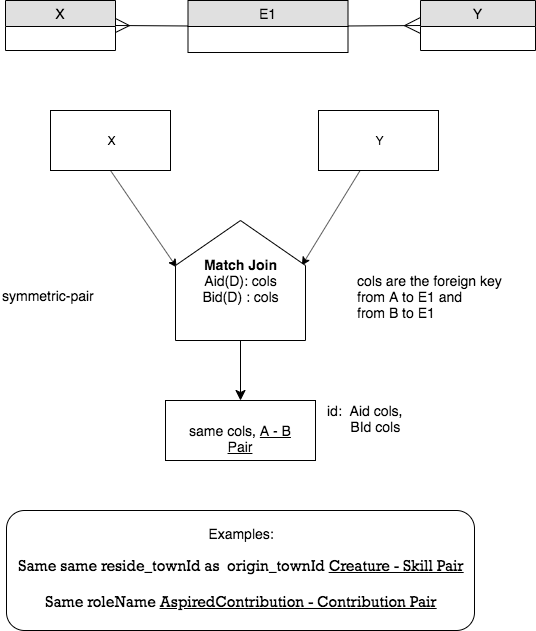
13.13.3. 1 - 1 match over cols between Same Base A, B: chicken feet in¶
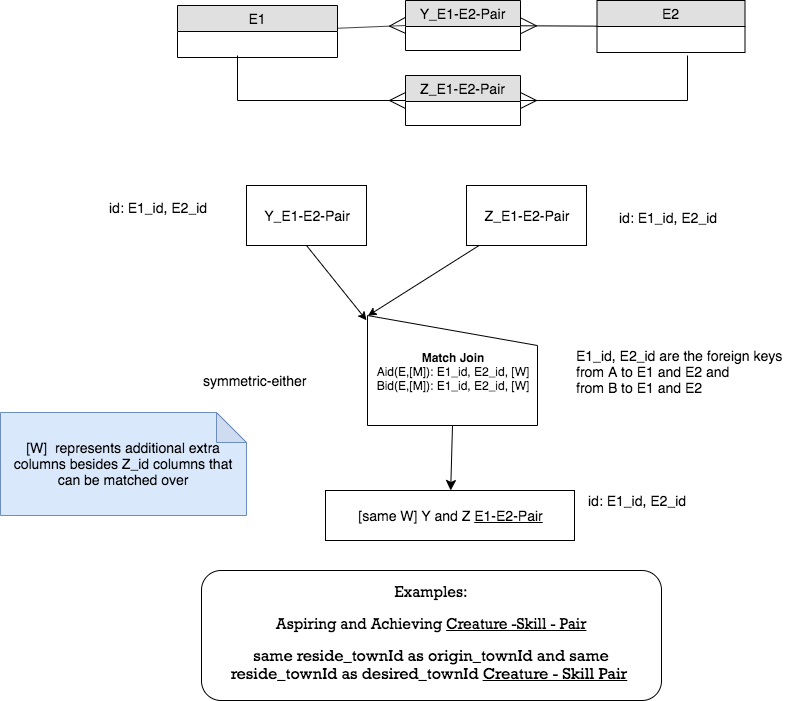
13.13.4. 1 - 1 match over cols between Same Base A and B¶
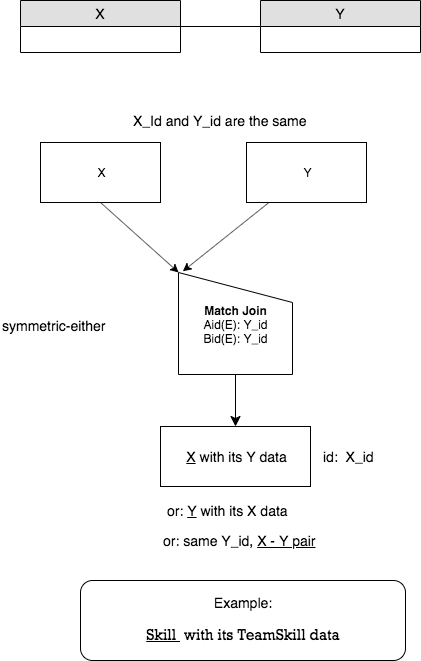
13.13.5. M - 1 match over cols between A and itself (Same Relation)¶

13.13.6. M - M match over cols between A and itself (Same Relation)¶
